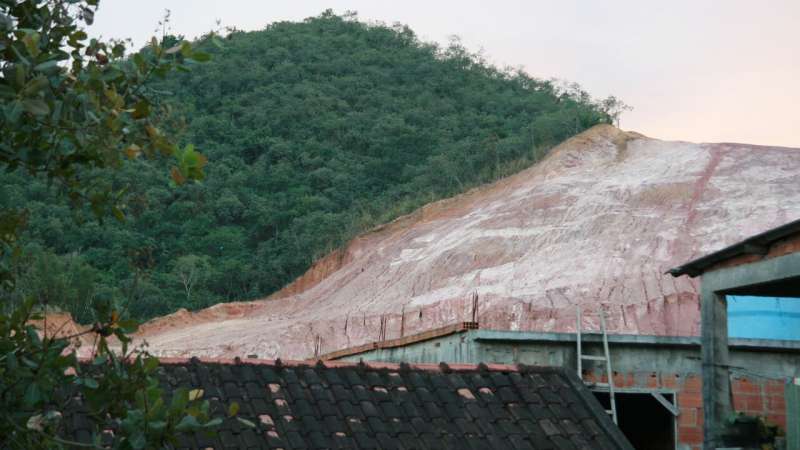This article has been reviewed according to Science X's editorial process and policies. Editors have highlighted the following attributes while ensuring the content's credibility:
fact-checked
trusted source
proofread
How is the Anthropocene helping to rethink the contemporary issue of environmental degradation?

The Anthropocene is a proposed geological epoch whereby humans are deemed to be the primary drivers of ecological and environmental change, through activities that lead to environmental degradation. This theory that human activity poses more of a threat to the natural environment than natural processes that have been in place for millions of years, highlights the significance of the human impact.
The Anthropocene was first proposed by Crutzen and Stoermer (2000) as a new geological epoch based on the amount that the climate has changed due to human interference, particularly since the 20th century. Over the last 5 million years, the Earth's temperature has actually decreased, but high temperatures due to human activity are beginning to buck this trend.
Environmental disasters are imminent, and extreme events are happening more frequently and severely (IPCC 2023). The current official geological period, the Holocene, has lasted 11,700 years in time since the last ice age, and is a period of relatively stable climatic conditions compared to previous epochs.
However, the short-term rapid change over the last 250 or so years has begun to buck the trend of the Holocene, prompting scientists to believe we have entered a new epoch. Humans are now the primary drivers of change on planet Earth, and our production and consumption levels are beginning to exceed planetary boundaries.
As of 2023, the Earth has exceeded six of the nine planetary boundaries, with ocean acidification not far from being breached as well. The safe operating space within the planetary boundaries are based upon the stable conditions experienced during the Holocene, so it is valid to suggest we have left the Holocene and entered a new epoch, whether this be the Anthropocene or something else.
The contemporary issue of environmental degradation (ED) is generally understood as the natural environment being compromised in some way. In 1997, Johnson et al. produced the following widely acknowledged definition: "Environmental degradation is any change or disturbance to the environment perceived to be deleterious or undesirable."
ED involves the depletion of important natural resources such as water or soil, destruction of habitats, reduced biodiversity and pollution, all of which have been accelerated by human development. Around 40% of the global population are adversely affected by land degradation, one million of the world's estimated 8 million species of plants and animals are threatened with extinction (IPBES 2019) and we are using the equivalent of 1.6 Earths to maintain our current way of life (UNEP 2021).
The overconsumption of Earth's resources and the unanimous nature of human-induced degradation is what has led to a new geological epoch being proposed. The Anthropocene helps to understand how human activities are affecting the environment, and puts current and recent environmental degradation into the context and timescale of previous climatic conditions on Earth.
By acknowledging the profound effects that human development is having on the environment, relative to how the environment was before, it highlights the urgency for mitigation plans to be implemented.
Human-induced ED originates from humans trying to distance themselves from nature by "inhabiting modernity" through rational thinking, science and technology. However, in their attempts to conquer nature, humans have inadvertently become a major force in its destruction.
The Anthropocene builds on past work stating humanity's attempts to conquer nature, but focuses specifically on the 21st century context of a growing concern around climate change. While the effect of human "modernity" on the environment is clear, it is contested when human activities became the primary driver of environmental change.
Some researchers believe this point could be as recent as the 1960s, due to dramatic increases in industrial and socioeconomic activity since then, while others look back in time towards the industrial revolution and colonialism as potential catalysts. It is also uncertain how historical environmental effects should be measured.
One example, Crawford Lake in Canada, has been proposed as an indicator of anthropogenic climate change, as the sediments at the bottom of the lake are made up of annual layers, providing a historic record of how climatic conditions have changed from human activities. Markers include fallout from nuclear tests, plastic particles and pollutants from fossil fuel combustion, showing evidence of ED.
However, some researchers suggest colonialism and the creation of slave plantations as the root of the current ecological crisis. During this period, nature became commodified as an alienated resource to be used for production and accumulation, as did certain groups of humans.
Davis et al. (2019) believe only a few powerful individuals were responsible for the resulting ED from what they call the "plantationocene," therefore the majority of humans were not responsible. Anthroprocene implies a collective human contribution towards adverse environmental impacts, but does not consider how these contributions may not be representative of the majority of people, as power and decision-making was concentrated in wealthy, white males from Europe.
In addition, ED happens disproportionately over Earth, so most evidence of anthropogenic climate change, which takes global averages, does not account for spatial variation. The Anthropocene should be viewed as a short-term geological event rather than an epoch, as it is a period of transition which involves the environment being destroyed.
ED is the most important issue of the 21st century, and change must be enacted quickly to turn around the current levels of biodiversity loss, habitat destruction and resource depletion. The Anthropocene recognizes humans as the primary drivers of this change, and while the term does help to highlight the impacts that human activities have, it fails to acknowledge inequalities in contributions towards these activities within the human population.
Despite this, the Anthropocene does generate discussion around human contributions to ED, acknowledging the problematic nature of current human development levels.
Provided by University of Sheffield


















